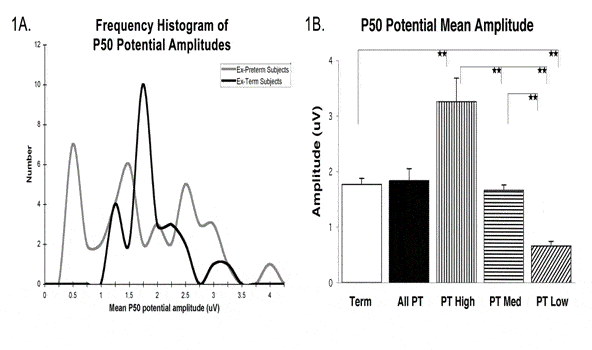We needed to be able to measure the effects of illness, lesion, drugs, etc. on different levels of the neuraxis in humans. Therefore, we established the capacity for recording the midlatency auditory P50 evoked potential, whose amplitude is a measure of level of arousal and thus assesses brainstem-thalamus processes (5). The use of paired auditory stimuli allows us to measure habituation to repetitive stimulation, or sensory gating, a process disturbed in a number of diseases (5). We also developed the capacity to measure reaction time (RT) using a Psychomotor Vigilance Task (6) to derive the prototypical measure of attention and thalamocortical processes (7). Finally, we developed the capacity to measure frontal lobe blood flow using near infrared spectroscopy, which provides an economical indicator for the use of more expensive methods such as PET. We established a satellite facility for spinal reflex testing in spinal cord injury and other patient populations.

